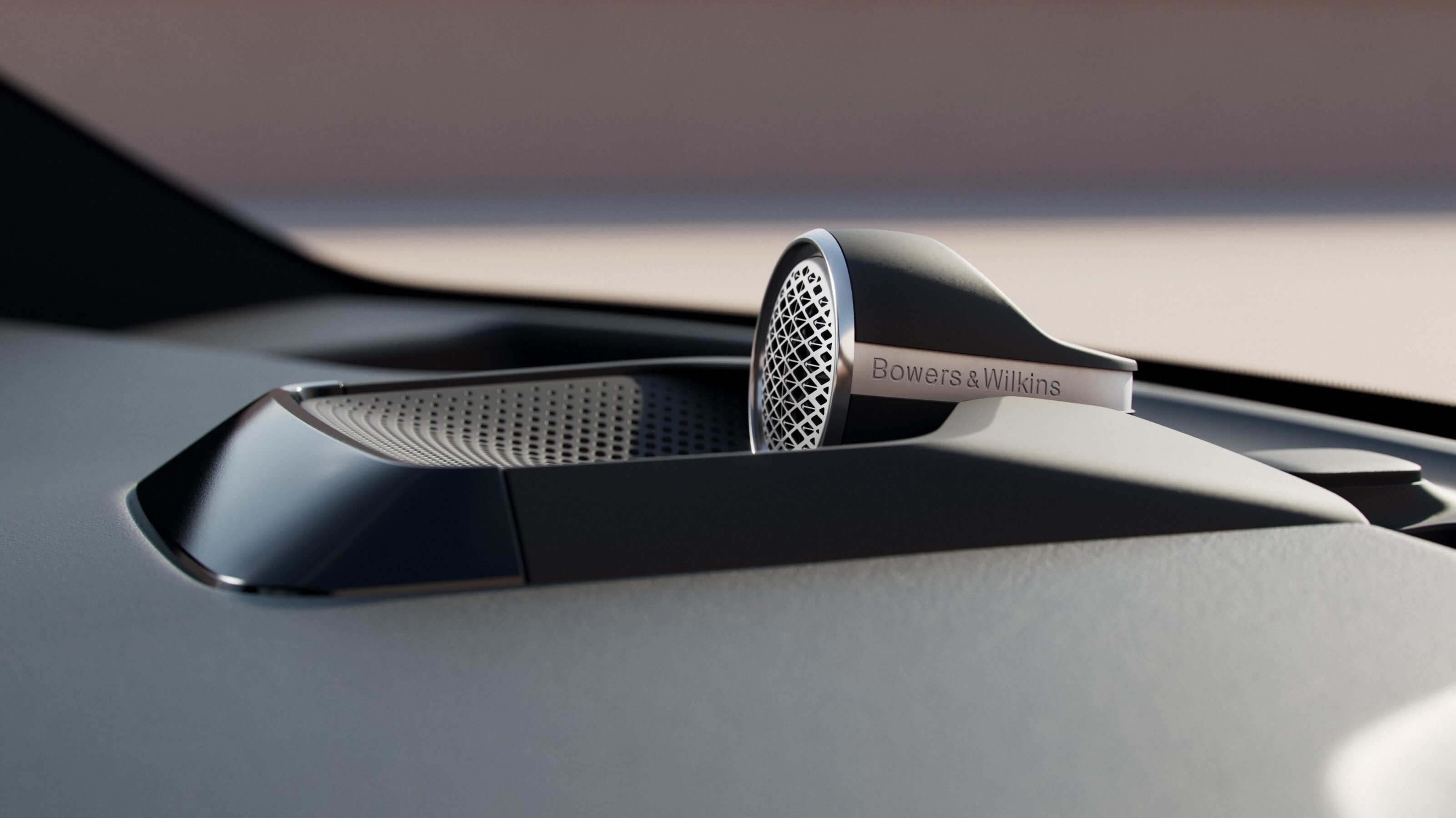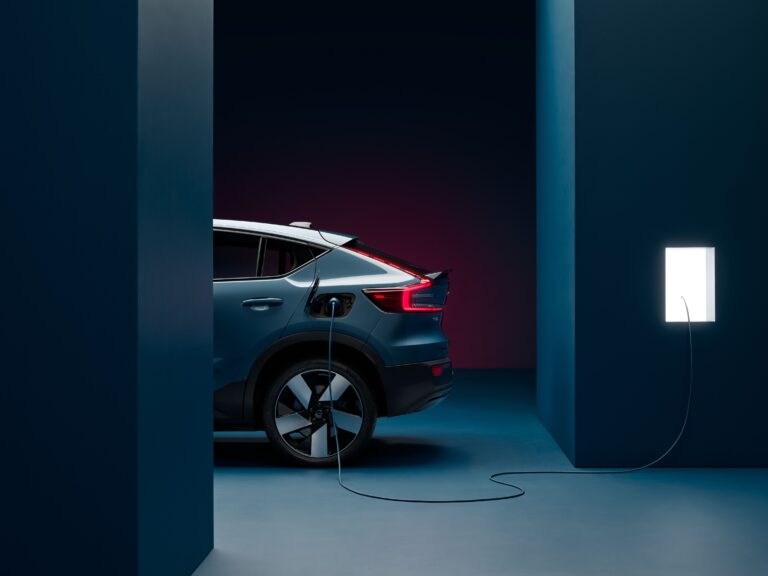The 2024 Volvo EX90 electric SUV has been unveiled ahead of its expected Australian arrival in late 2024.
Snapshot
- 2023 Volvo EX90 electric large SUV unveiled
- Features a standard LiDAR scanner, bi-directional charging, and more
- Expected to launch in Australia in 2024
It will become the third battery-electric model in Volvo’s growing electrified vehicle family, as the Swedish brand prepares to go all-electric by 2030 globally and by 2026 in Australia – four years ahead of the international target.
Whereas the existing XC40 Recharge and C40 Recharge small SUV twins are based on a modified internal combustion platform, the seven-seat EX90 large SUV – similar in size to the current XC90 – rides on the Geely-developed SPA2 architecture.

This dedicated EV platform is shared with the recently-revealed Polestar 3 and the upcoming Polestar 5.
At launch, one powertrain will be offered, while the latest technologies include bi-directional charging and a standard roof-mounted LiDAR scanner for full self-driving capability.
In Australia, the EX90 is tipped to launch in late 2024, with production commencing in the United States and China next year.

JUMP AHEAD
- Battery, performance, charging and driving range
- Exterior design
- Interior comfort and technology
- Infotainment
- Safety features
- Availability
Battery, powertrains, charging and driving range
As with the Polestar 3, the Volvo EX90 will be available with one powertrain option at launch – albeit with the former’s Performance Pack as standard.
Under the skin, the EX90 features a 111kWh lithium-ion battery pack, which provides energy to a dual-motor system.
It will support bi-directional charging, with vehicle-to-load (V2L) and vehicle-to-grid (V2G) technology.

The feature will be initially available in selected markets, with the EX90 capable of powering homes and “other electric devices”, such as portable appliances.
It will be automatic and managed within Volvo’s smartphone app, with algorithms designed to reduce the risk of potential battery degradation from the vehicle acting as a power bank.
In addition, Volvo claims using the EX90 to power your home could be beneficial during peak periods when electricity prices are higher, following a prior top-up during off-peak times.
As standard, the Volvo EX90 is powered by a dual-motor, all-wheel drive system producing 380kW and 910Nm.

Volvo has yet to confirm performance figures, but the related Polestar 3 is capable of a 4.7-seconds 0-100km/h sprint with the Performance Pack.
Likewise, its charge rate is unknown, but the Polestar 3 is capable of DC fast-charging up to 250kW, which delivers a top-up from 10 to 80 per cent in around 30 minutes.
Volvo says the EX90 has a WLTP-rated driving range of 600 kilometres – down slightly on the Polestar 3 but ahead of the Mercedes-Benz EQE 500 SUV (547km) and Audi Q8 E-Tron 55 (582km).

MATCH-UP
| MODEL | POWER | BATTERY | RANGE | 0-100 KM/H | MAX CHARGE RATE |
|---|---|---|---|---|---|
| Volvo EX90 | 380kW/910Nm | 111kWh | 600 km | N/A | N/A |
| Mercedes-Benz EQE 500 SUV | 300kW/858Nm | 90.6kWh | 547 km | N/A | 170kW |
| BMW iX xDrive50 | 385kW/765Nm | 112kWh | 630 km | 4.6 seconds | 200kW |
| Audi Q8 E-Tron 55 | 300kW/664Nm | 106kWh | 582 km | 5.7 seconds | 170kW |
| Polestar 3 | 360kW/840Nm (380kW/910Nm w/ Performance Pack) | 111kWh | 610 km | 5.0 seconds (4.7s w/ Performance Pack) | 250kW |
Note: List scrolls horizontally.

Exterior design
As expected, the EX90 has a familiar silhouette to the XC90 but with contemporary flourishes, such as tail-lights similar to the Volvo S60 and Polestar 2 sedans and flush door handles.
The unusual bump on the roof houses the EX90’s LiDAR scanner, which will enable full self-driving technology in select markets in the future. For more information, click here.
Up front, the closed-off grille and bumper are joined by the brand’s Thor Hammer lighting system, which has been improved with digital matrix-LED lights and separate daytime running lights similar to the Hyundai Palisade.

The large alloy wheels feature off-centre Volvo badging, while the side profile is an evolution of the XC90’s design, with a large glasshouse and boxy shape.
As announced last week, the EX90 has a claimed aerodynamic efficiency of 0.29Cd, which is competitive for a seven-seat SUV. For reference, an Audi Q7 is listed at 0.36Cd.

Interior comfort and technology
Inside, the cabin is an evolution over the XC40 and XC60 – though similar to Polestar 2 and 3 – with a minimalistic design featuring a slim digital instrument cluster, large portrait-orientated infotainment system, and an illuminated capacitive-touch steering wheel.
According to Volvo, the instrument cluster graphics are designed “to present what you need in a simplified way”, with a real-time readout of what the assisted driving feature has detected.
As with the Tesla Model Y, the electronic door handle switch is hidden, while there’s also a column-mounted gear shifter. However, a physical play/pause and volume rotary dial remains fixed to the centre console, in line with the current Volvo range.

In addition, the EX90 includes a wireless phone charger, a panoramic sunroof, LED ambient lighting, several USB-C ports, a wide array of storage options, and an available 25-speaker Bowers & Wilkins audio system.
Volvo claims the interior is produced from “natural and responsibly-sourced materials”, in line with its plan to become a carbon-neutral company by 2040.
Infotainment

Fixed in the centre of the dashboard is a 15-inch portrait-orientated infotainment screen running the latest version of the Android Automotive operating system.
This includes 5G network connectivity, enhanced Google Assistant support for remote vehicle control, and support for Dolby Atmos audio – first seen in Mercedes-Benz vehicles.
It is powered by a specially-developed Qualcomm Snapdragon chip – as found in most flagship smartphones – with support for Epic Games’s Unreal Engine, enabling quicker “computing power and high-quality graphics on the in-car screens and head-up display”.

Volvo has introduced ultra-wideband technology, allowing owners to unlock and lock their EX90 with a compatible smartphone, such as the latest Apple iPhone, Samsung Galaxy and Google Pixel devices.
Also offered are wireless Apple CarPlay and Android Auto, built-in Google Maps navigation, and support for over-the-air software updates.

Safety features
Volvo has announced new active safety features debuting on the EX90 – and fitted as standard – will include LiDAR sensors and an in-car driver monitoring camera.
Volvo has the EX90’s laser-scanning LiDAR system is compatible with full self-driving. It will be offered via subscription in future – once the technology is approved in selected regions – with over-the-air software updates.
LiDAR – which stands for Light Detection and Ranging – will be standard across the EX90 range, utilising “light in the form of a pulsed laser to measure ranges with high precision and fidelity”.

It will be embedded in the roofline of the EX90, with a 1550-millimetre wavelength bringing the ability to detect pedestrians at a 250-metre distance at highway speeds, even in the dark.
It will be matched with Volvo-developed software and the vehicle’s ‘super-computer’, which is supplied by technology giant Nvidia – and is a step beyond Tesla’s full self-driving beta, which can only see the road ahead via cameras on the latest Model 3 and Model Y vehicles.
The brand’s ‘driver understanding system’ uses two internal cameras to detect when a driver is distracted, tired or intoxicated via specific eye-gaze patterns.

This is achieved through eye tracking designed to recognise a driver’s ‘gaze concentration effect’.
Volvo says a driver’s attention level should be around 80 per cent, with 90 per cent or above a sign of cognitive distraction or alcohol intoxication. In comparison, a result below 60 per cent signifies a visual distraction, such as using a mobile phone.
Built from existing driver attention alerts and monitoring cameras, the system also recognises steering behaviour to intervene first with a visual warning.

It will then automatically reduce speed, keep the vehicle in its lane, halt to a stop, and place an emergency call if the driver is impaired.
In addition, expect improvements to existing active safety equipment, such as lane-keep assist, though Volvo has yet to detail full specifications for the EX90.

Availability
The 2024 Volvo EX90 is expected to arrive in Australia in late 2024, with full details and pricing to be announced closer to launch.
It will commence production at Volvo’s facility in the United States next year – joining the S60 sedan and Polestar 3 – in addition to its plant in China.
With competition from the Mercedes-Benz EQE SUV, Audi E-Tron and Polestar 3, expect the Volvo EX90 to start from around $140,000 plus on-roads in Australia.
The current internal-combustion XC90 large SUV is priced from $92,990 before on-road costs, extending to $121,990 for the flagship plug-in hybrid variant.
We recommend
-
 News
NewsVolvo EX90’s aero credentials revealed ahead of next week's release
It’s now just seven days until Volvo unveils its new all-electric large SUV, and there’s another teaser to talk about
-
 News
NewsVolvo to go all-electric in Australia by 2026
Bold new plan will ditch ICE and increase prices but Volvo is confident it’ll boost sales and even steal customers from Tesla
-
 Reviews
Reviews2023 Volvo C40 Recharge review
Volvo adds a sexier alternative to the XC40 that’s bursting with equipment and all-electric performance. But is the C40 a case of style over substance?






